Before our trip to Japan we tried to find a cooking school with Japanese or other Asian specialities. We even booked one potential course, but it never happened. So, when we had all set for Japan, it was just a matter of place where we’ll attend a cooking school.
Dina found Cooking Sun somewhere on-line, and we booked for early morning class. We were there among first ones, standing in front of a typical Japanese small house. No one on the streets, 35 degrees Celsius and not a sign that anyone is actually in the house. A few minutes later a couple more people appeared and after some time we decided to knock on the school doors. As expected, people were in it and were preparing everything for our four hours lectures.
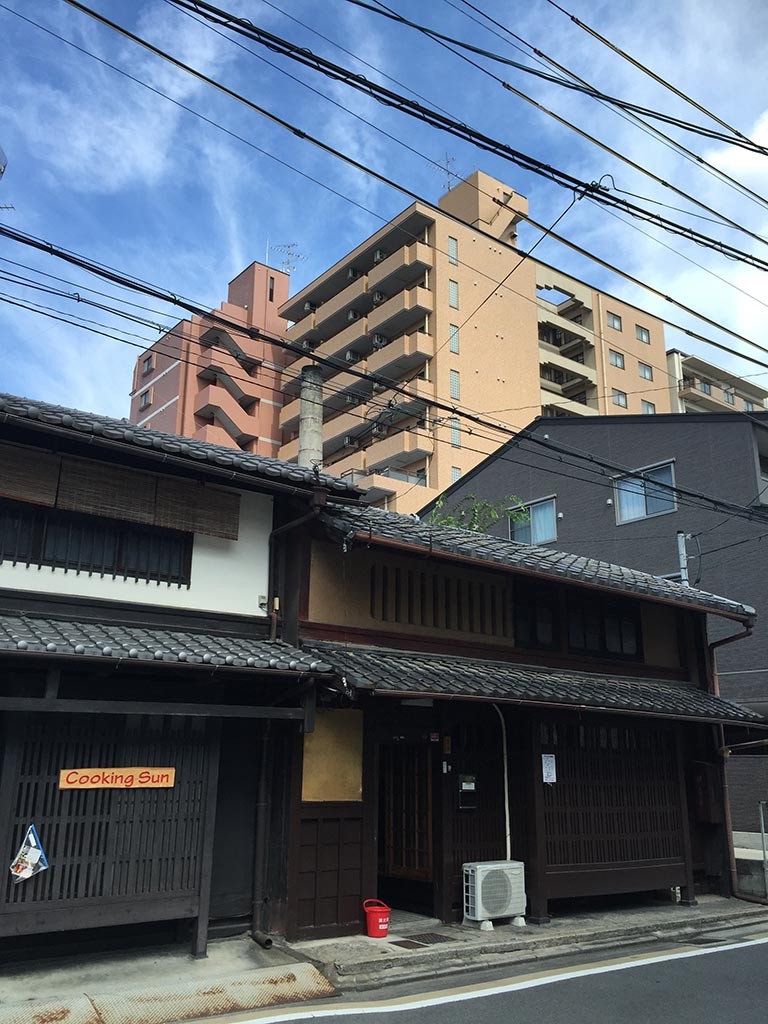
We all got a couple of minutes to relax and have some water, and then we got our uniforms and inductive cooking hobs. It was high time to start working.
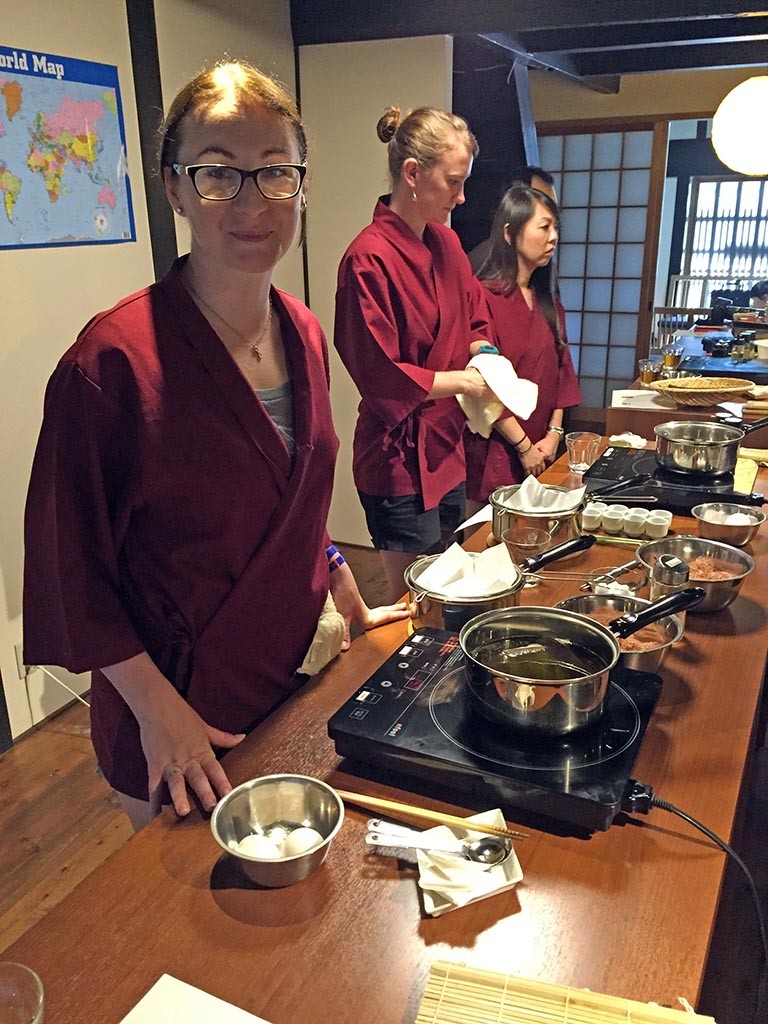
We booked a course that teaches how to prepare a typical lunch Bento Box. That means four different dishes and a Miso soup. In order to prepare the majority of Japanese food, you need a good “Dashi”. Dashi is sort of fish stock, made of algae and Katsuobushi. Katsuobushi is apparently the hardest food on planet earth. It’s actually one sort of tuna that is dehydrated and smoked multiple times and then fermented with some special kind of yeast that is drying it even more. What you get is something that is hard as wood and looks like wood.
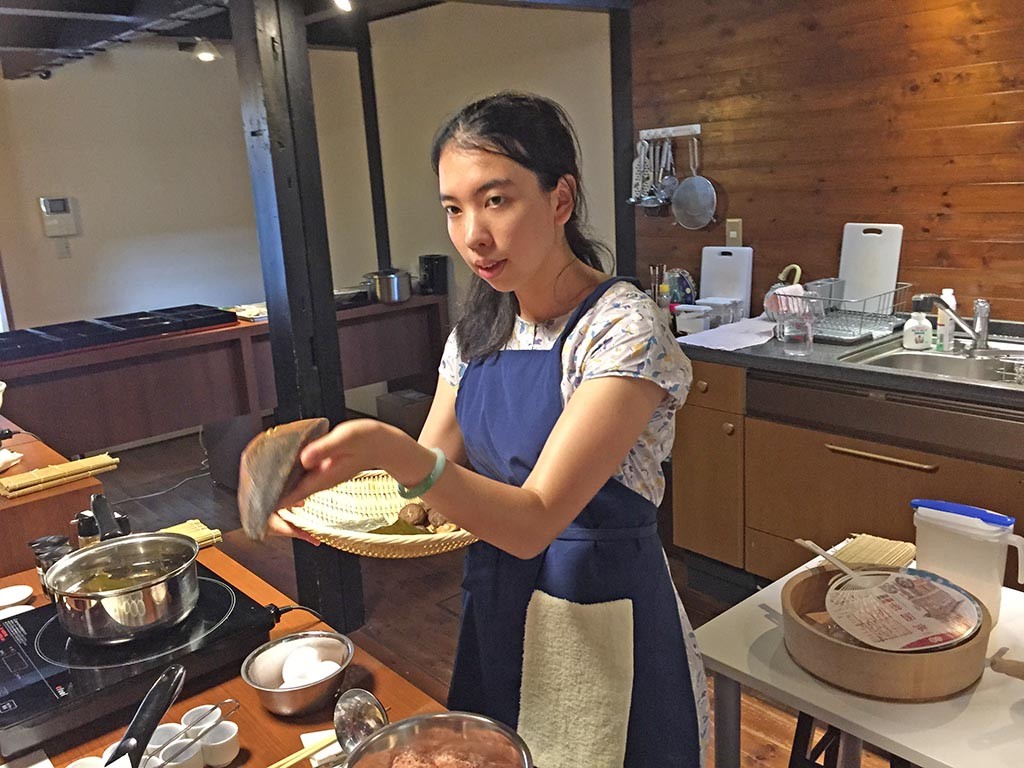
Katsuobushi is then shaved into small flakes using a special peeling tool, and boiled in water which was used to boil algae for just a few minutes first.

It takes in total less than ten minutes to prepare Dashi, which is a light clear broth with essence of the sea. Dashi is usually prepared in larger amounts and used in the next few days in many Japanese meals and soups.
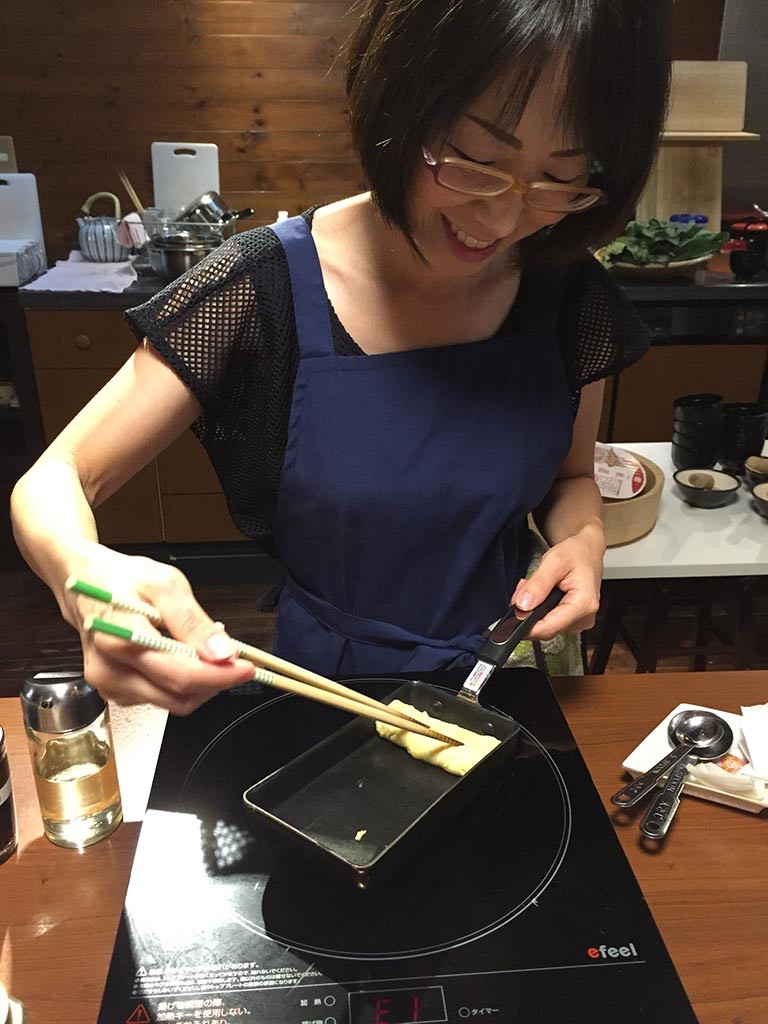
Our teachers taught us then how to prepare perfect egg rolls that can be used for sushi or eaten as such for breakfast, but show lasted just a few minutes, and we had to do it on our own now. If you pay attention to details on the photo above, our teacher is using slightly longer and stronger chopsticks. Those long chopsticks (ryoribashi or saibashi) are typical and most commonly used tool in Japanese kitchens. They are used to mix, stir, rotate and transfer food, but not for eating. No need for a big fork, tongs and such when all you need is a pair of long chopsticks. 😉
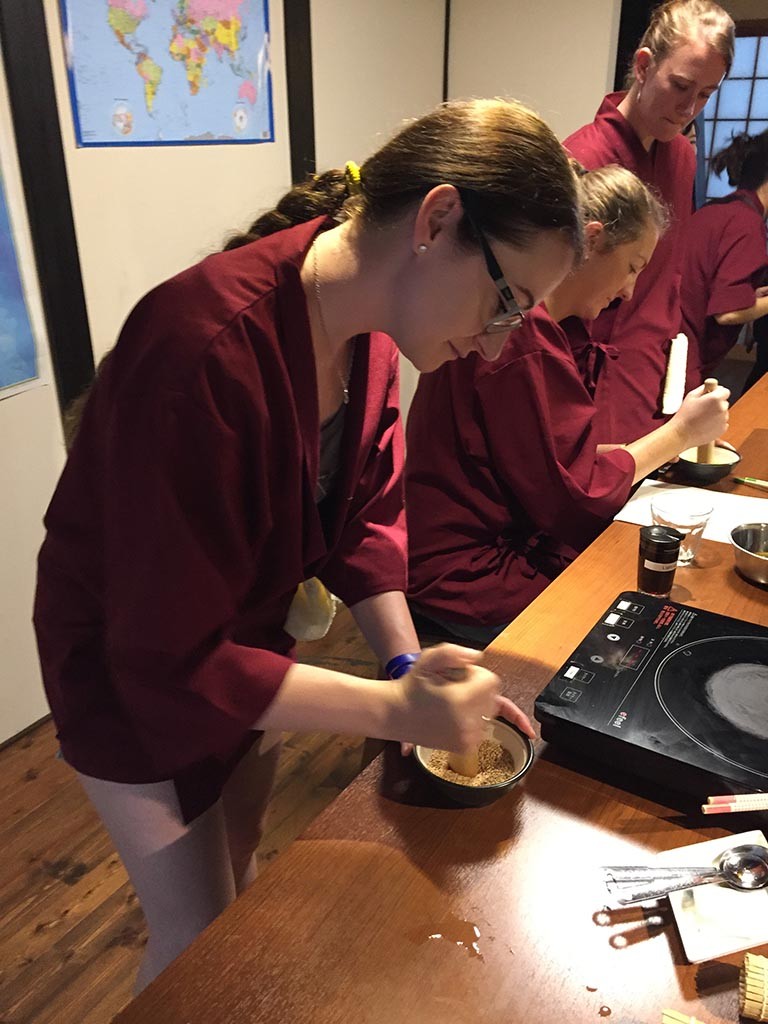
Well, if you want to prepare a spinach with sesame, you’ll need a specialized bowl (suribachi and surikogi), or mortar with sharp bevels and a pestle. In it you can turn sesame seeds into a fine sesame paste that is later mixed with fresh spinach.
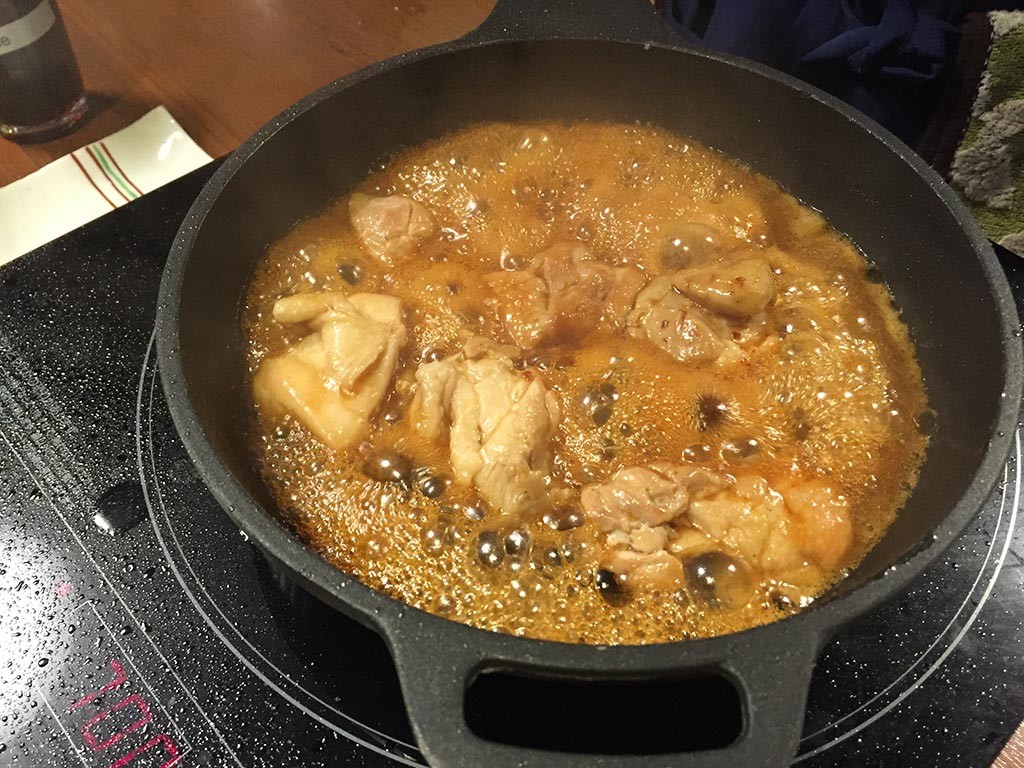
We had a chance to learn how to prepare our own Teriyaki sauce, using proper soy sauce and Mirin. We as well learned the differences between different kinds of soy sauce here, and what we though “light” means – used not to gain weight – is not true at all. 🙂 Dark soy sauce is stronger and thicker, and it’s used in process of cooking to add colour and it’s taste is developing during heating. Light soy sauce is used in most cases, it is saltier and tastier and it’s used for seasoning. 🙂 So, when you ask yourself “Which soy sauce do I need?” most likely you want to buy a light one, that is used more often.

We learned how to properly clean prawns for deep frying. All you need is a sharp and pointy knife or a thin needle to drag the intestines out. 🙂 When you look at the prawn’s back, there are two kinda similar dark lines, one on top side and one on the bottom. Totally opposite from a fish, lower one is a vein, upper one are intestines that should go out. 🙂
We fried prawns, pumpkin and some other vegetables. Proper trick (and I knew it earlier) – To keep the breading stick to a food, it must be freezing cold. That’s why to pan fry breaded food, you should keep both food and the breading in the fridge for a while and keep it on ice cubes while you are frying it in boiling oil.
As expected, we were preparing our own Japanese sushi, with proper sushi rice. Interesting fact – I was preparing it almost perfect so far. The only thing that was missing is proper cooling of sushi rice, and I’ve learned why that is important. But other than that, all my recipes and technique so far was as I was born and raised in Japan. 🙂
In the end we’ve placed it in Bento boxes and served it to ourselves.
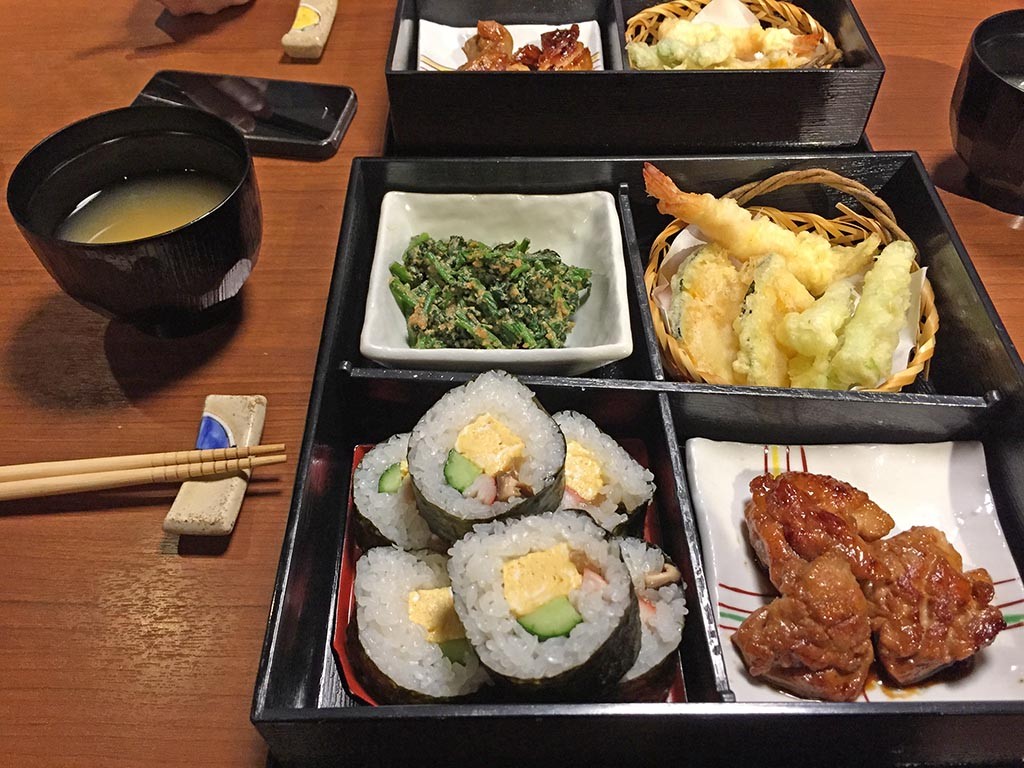
The only one who served it wrong was – me. 🙂
For every meal our teacher told us where to place the food within the bento box, and as I usually do, I’ve placed it in different compartment. That was not so big issue, except that according to Japanese tradition, rice (and in this case sushi) must be in lower left corner. All other placements can be random, but rice must come placed bottom left!. Off course, mine was not there, but I’ve corrected my mistake later. 🙂
I as well paid attention to rice positioning during the whole stay in Japan, and I can tell you that rice was positioned correctly. However, it’s not the case in Europe. 🙂
Now, we are officially certified for Bento box preparations, so if my IT or writing and blogging career does not suffice, I can search a new career path in Japanese restaurants.
🙂
P.S. Of course we bought suribachi, surikogi and saibashi and our Japanese dinners are now perfect. 🙂
Till the next one,
Itadakimasu! (Bon appétit)
Balky
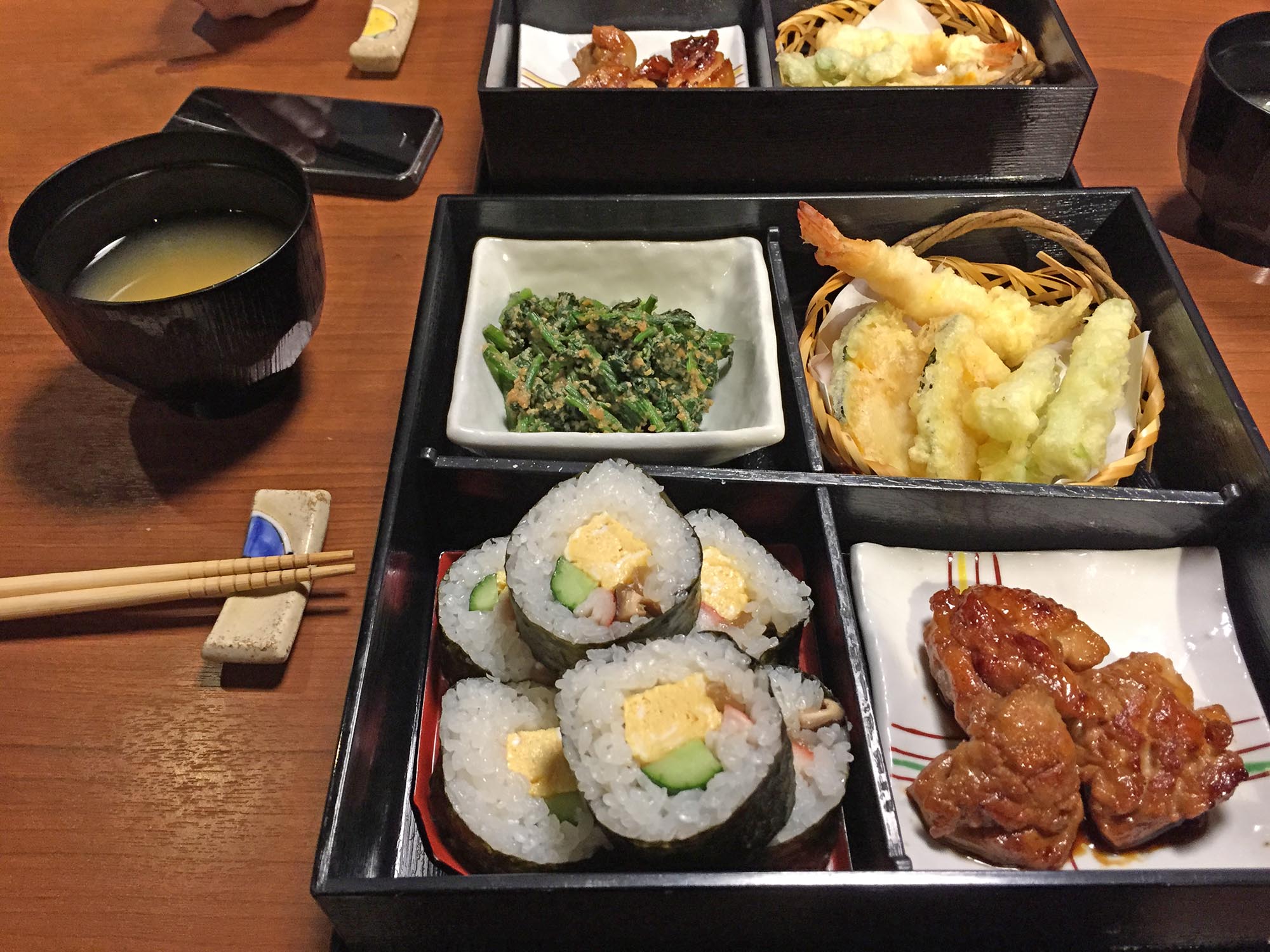
You must be logged in to post a comment.